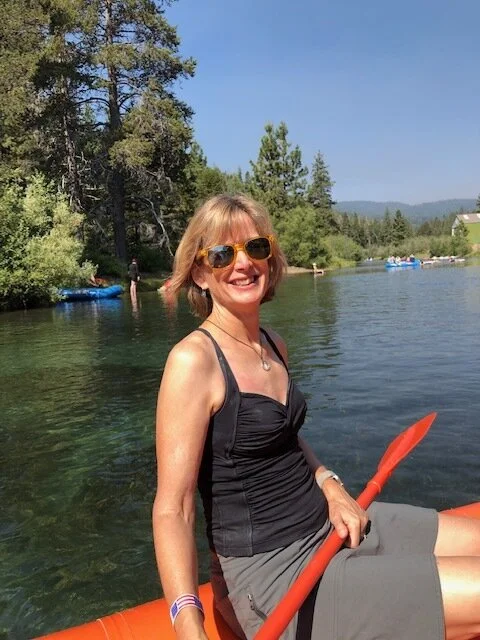Visualize
/This week's class was called "Visualize". We visualized ourselves getting into the pose: Urdhva Dhanurasana (full wheel). I opened class discussing the concept of how athletes in competition will sometimes visualize in their mind's eye nailing their dive or serve or dismount. And those who visualize are often more successful that those who do not.
We have great power in engaging with our mind. We don't have to let our minds run the show randomly; we can actually be the gatekeeper of our mind. This is an important learning in yoga & meditation.
In our lives, we can visualize the goals, dreams and accomplishments that we're longing for by seeing ourselves accomplish those things. The idea is to visualize the successful end goal happening with as many details as you can imagine. After our opening breath work and intention setting, I took the students through a brief visualization of seeing themselves lift up into full wheel pose.
We did a well rounded practice including standing poses, thigh stretches, and preliminary back bends on the belly to warm up for our apex pose. I emphasized drawing arm bones into the shoulders sockets as we progressed through poses so that this alignment skill would serve the students when they explored the challenges of wheel pose.
In each class throughout the week, a student demonstrated full wheel with a rolled up blanket against a wall. The blanket helps students get deeper into the shoulders, chest and back without the deep bend into the wrist. The demo allowed other students to see how it was done.
Yogis practiced full wheel 3 times. They basked in the potent heart opening feeling after each round. I reminded them that this pose takes lots of practice and lots of warm-up. It just takes time, but the body will respond and open overtime. If visualization helps you, then jot ideas down, journal, contemplate, and continue practicing. Namaste, Lynn
Plank Play
/This week's class was called: plank play. We played with several variations of side plank. Pantanjali in the Yoga Sutras says, "the perfect yoga asana is a combination of irresistible stability and alert relaxation". The class this week helped students explore the balance between effort and ease.
Physically, we focused on every exhale drawing the belly and ribs in, to support the core and back and to also learn to: "strengthen, don't tense". Learning to be in our strength and effort but maintaining an undercurrent of ease.
I spoke of how the asanas (yoga postures) help you get strong, flexible, bring calm, energy and healing but even more important are the intentions a student percolates through the poses. Being present, mindful, in the breath as you move.
We had fun and each student looked at where they wanted to put more effort and where they wanted more ease and how that played out in their poses this week. Namaste, Lynn
What makes an advanced yogi
/I'm back from North Carolina and San Diego, and happily resuming my blog on this week's yoga class.
Most students initially come to yoga for the physical practice. We come to get strong and flexible, to overcome injuries and to reduce aches and pains from sports and daily living. We soon learn that the practice is much more than the asanas. No one needs to tell you. You discover the impact of yoga as you wake up to the present moment and all it's power. And then the more you attend yoga classes, the more you see that it's the advanced yogis, its the teachers and the seasoned practitioners that are taking childs pose, resting, and not taking every option. Whereas it's usually the new students that are huffing and puffing their way through flows and options their bodies may not be ready for.
One of the big things about a yoga practice is that it's a place to listen to your body and to get curious about what your body needs AS YOU GO. So if you want to do a strong practice, you will, but if you need a slow practice you can embrace that, too. Every day is not "handstand day" :)
The performance of an asana should be nourishing and illuminative... shedding light on what your body and mind need today. We concluded this week's asana practice with this guided meditation that focused on helping you feel like you're supported so you can open your heart: I encouraged students to find a posture in which their back felt fully supported ( legs up the walk, or sitting against a wall). I asked them to pay attention to their breath. To notice their body. I asked, "where is there spaciousness"? .... "where is there tension"?
I then asked students to move their attention to their back and allow themselves to feel supported. Holding this support in their body, I guided them to turn their breath and attention to their heart space. Asking, "is there fear"?.... "is there hope"? .... "is there both"? Just notice; just observe. Closing the meditation with guidance to release into the support against your back as deeply as you are able. Asking students ... "Is there room to relax and soften your heart space"?
From meditation we headed right into savasana. Namaste, Lynn















